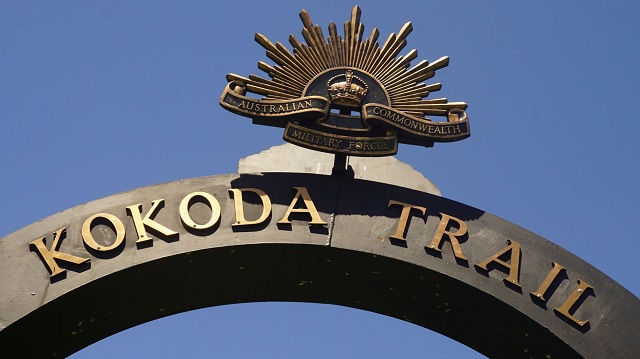
We have lived in Papua New Guinea since 1990. Based in Port Moresby. We know how it works.
Pam Christie the owner of PNG Trekking Adventures has walked the Kokoda Track 69 times.
Having spent many years traveling and trekking throughout Papua New Guinea she knows the culture and is respectful and passionate that the resource owners and villagers are fairly represented. Consulting to Government Departments in PNG and overseas on protocol and cultural aspects that must be considered when coming to Papua New Guinea. Pam also travels extensively around the world marketing and promoting tourism in Papua New Guinea.
Please take into consideration when booking your Kokoda Track Trek or any other expedition/holiday that PNG based companies benefit the communities and people of Papua New Guinea, this is ongoing for us. We are not fly in, fly out. We are committed to sustainable tourism and community development programs. Villagehuts.com, operate Dave Cavell School, "Crumbs Along Kokoda" project, Mt Wilhelm knitting project. Retirement succession objectives for all our PNG employees.
PNG Trekking Adventures is legally compliant to work in PNG. All our overseas guides have PNG Work Permits. Our taxes are paid in PNG and we are a PNG IPA approved company. Our revenue stays in this country.
PNG Trekking Adventures home and offices are in Port Moresby. We are with you from the time you step off the plane until the time you get back on it for your return journey home.
We take small manageable groups. You are not just a number, we want our clients to experience the true Kokoda Track and what PNG has to offer, to share our passion.
Larger groups considered when corporate/family groups/school groups are booking, please enquire with us regards this.
Insurance: $10 million Public Liability and very importantly Workers Compensation for all our PNG employees.
Safety: Is a priority, satellite phones, track radios, garmen watch trackers, medics.
Licensed: Licensed member Kokoda Track Authority. Member PNG Tourism Industry Association, Member Surfing Association PNG, Member South Pacific Tourism Organisation.
All tourism operators inclusive of overseas operators working in Papua New Guinea and along the Kokoda Track should be members of the PNG Tourism Industry Association. This is your (the client) protection against rouge operators.
WWll Historians. PNG Trekking Adventures is the preferred Australian Defence Force operator. Having escorted many high profile, defence and army personnel across the Kokoda Trail.
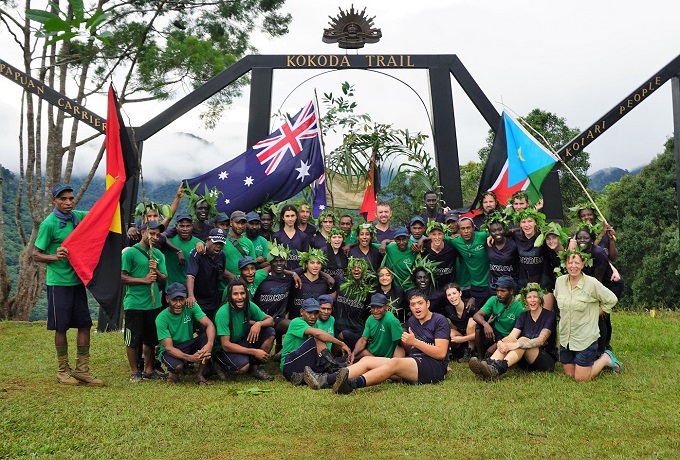

The End - Ower's Cnr
KOKODA TRAIL BATTLES-Chronology
Below is a brief outline of the battles fought during the Kokoda Campaign. Whilst on the track you are taken on the campaign journey, living the battles as we narrate the brutal fighting in much more detail.
Kokoda & Deniki Battles: 22nd July - 12th August
Our trekkers have flown the 30 minutes by private charter into Kokoda this morning to start their historic journey along the Kokoda track.
First engagement 28th July 1942
The first engagement at Kokoda took place after skirmishes around Awala, Gorari Creek and Oivi, Captain Sam Templeton disappeared around Oivi area and Major Watson assumed command of the troops. The Australians and Papuans of Maroubra Force retreated back towards Deniki, a small village 3 hours walking time south of Kokoda.
Here they met up with Lieutenant Colonel Owen who is now in command. On 28 July, a force of around 130 to 148 Australians and Papuans marched back to the unoccupied Kokoda village, Owen positioned his force north of the village on the eastern tip of a "tongue-shaped plateau".
Owen’s had requested more reinforcements from Port Moresby. Two Douglas transport planes arrived but did not land due to debris on the airstrip and returned to Port Moresby.
2am on the 29th July the Japanese launched an attack, this was close quarter fighting, bayonet to bayonet, fist to fist. Owen’s leadership was outstanding the extremely outnumbered Australians repelled attack after attack during the night. Lieutenant Colonel Owen received a fatal bullet to the head. Major Watson once again took command.
Ammunition is now extended, as dawn approached Major Watson gave the order to his troops to withdraw to Deniki.
Australian losses amounted to seven killed and six wounded while 12 Japanese were killed and 26 were wounded in the assault. Owen was posthumously bestowed the US Distinguished Service Cross, becoming the first Australian to receive this decoration. In withdrawing from Kokoda, the Australians carried what equipment they could, but had left behind a large number of grenades, five machine guns and 1,850 rounds of rifle ammunition. The Japanese troops, who were issued with inferior grenades that had to be struck on the ground to prime, relished this find.
Second engagement 8th August 1942
Major Allan Cameron is now commanding the full consolidation of the 39th Battalion, including eight Australians and 35 Papua New Guineans from the PIB and 12 from the Australian New Guinea Administration Unit (ANGAU)
Major Cameron’s orders were to retake Kokoda.
Three companies took three different routes down to Kokoda. Captain Bidstrups D Company encountered the Japanese East of Kokoda around Pirivi area. Heavy fighting ensued, eventually having to retreat back to Deniki. Cpt Arthur Dean’s ‘C’ Company was pushed back along the track towards battalion’s HQ’s. Dean was killed. Defence of HQ’s was hastily organised fighting off attacks over several hours. Captain Noel Symington’s ‘A’ Company occupied Kokoda waiting for aircraft reinforcements which unfortunately did not arrive due to bad weather. Symington’s company held out against several determined attacks. The fighting intensified finally running low on ammunition and food and not receiving the promised resupply Symington’s company was forced to withdraw 7pm 10th August. Arriving back at Isurava on the 13th August. Australian losses 23 killed and 17 wounded. Japanese had similar losses 21 killed and 44 wounded.

View from Deniki back to Kokoda - 1942
Isurava Battle: 26th - 30th August
Trekkers have arrived at Isurava Memorial late evening on Day 1 of our Kokoda trek.
This morning trekkers and our PNG Crew will rise early for a Dawn Service and all participate in this very moving service.
The village of Isurava was the site of the biggest battle fought by Australian troops during their retreat along the Kokoda Track.
The 39th Battalion have now retreated back to Isurava from Deniki where they are lying wait for the Japanese onslaught. Taking into account that they are poorly equipped. Having no shovels to dig in with, using their empty bully beef tins, bayonets and their helmets.
On 17 August, Lieutenant Colonel Ralph Honner took command of the 39th Infantry Battalion, Reinforcements are now also on the way. The 21st Infantry Brigade – the 2/14 and 2/16 Infantry Battalions – under Brigadier Arnold Potts are heading up the track to reinforce Marouba Force. These soldiers are veterans, having fought in the Middle East earlier in the war, although they will be tested severely in Kokoda’s jungle conditions.
On the 26th August the Japanese clashed with the 39th's forward outposts at Isurava. The same day the first of two companies of the 2/14 Battalion arrived to relieve the 39th's young soldiers, the average age of whom was 18.
The 39th Battalion were to withdraw from battle but Lt Col Honner was very aware of the impeding on-slaught that was about to prevail and decided his battalion would remain to fight.
On the 29th August the Japanese attacked, it was during this ferocious fighting that Private Bruce Kingsbury rushed forward firing his Bren gun from his hip. He was killed by a snipers bullet and subsequently awarded the Victoria Cross posthumously for his bravery.
There was to be attack after attack by the Japanese that day, the Australians in fear of being overrun withdrew approximately 1klm back to the Isurava Guest Haus area.
The following day (30th Aug) the Japanese were still attacking, the Australians were now struggling to muster full platoons. The 2/14 withdrew and regrouped at Alola the following morning. There were 172 missing, unknown dead and wounded. The Australian diggers are now implementing the fighting retreat. They do not have the numbers nor the supplies to hold the Japanese at this point.
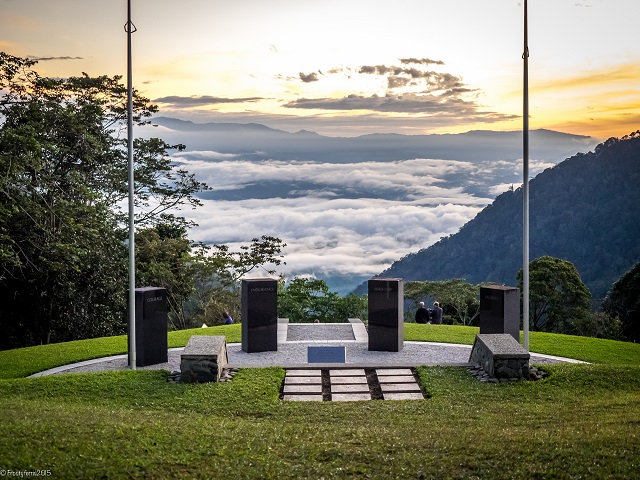 Present day Isurava Memorial
Present day Isurava Memorial
Fighting withdrawal: 31 August – 5th September
Trekkers have overnighted at Isurava Memorial and are now heading out on day 2 of their Kokoda journey, it’s all becoming very real, it’s emotional and physically challenging. We are now following the 2/14 and 2/16 Battalions fighting withdrawal all the way through to Brigade Hill. The next bloody battle that the Australians take a stand to attempt to hold the Japanese freight train that is heading to Port Moresby. The 2/16 and 2/14 Battalions after the Isurava fighting are now down to 700 men between them. They are covering the withdrawal of Marouba Force.
The first position the Australians held was just south of Alola on the night of 30 August. After dark they withdrew. It was just as well that they did as a fresh Japanese group none of which had participated at Isurava, was advancing rapidly after them. 1305 men and four mountain guns the aim is to overtake and destroy the Australian rear guard. By early morning of 2 September the Japanese had penetrated the Australian position in several places, the Australians withdrew further down the track to Templeton's Crossing. The following night the Australians crossed Eora Creek and made another stand on south ridge. The Japanese attacked again and were successful, having no choice the Australians had to withdraw again to Myola. Myola a major supply base for the Australians. The Australian rear guard then fell back to Efogi where they re-joined Maroubra Force.
Eora-Templeton's 1 is regarded as a successful rear guard action on the part of the Australians as their tactics slowed the Japanese advance. Australians loss of 21 killed and 54 wounded. Japanese 43 killed and 58 wounded.
.jpg) Eora Creek - August 1942-Photo Damien Parer (AWM Image)
Eora Creek - August 1942-Photo Damien Parer (AWM Image)
Mission Ridge & Brigade Hill Battles: 6th – 9th September
Our Kokoda Trekkers arrive at the above battlefields on day 5 of their trek. The past 3 days trekking has seen the group visit Surgeons Rock, climbing up onto Eora Creek Ridge to view ammunition pits, divert off the track into Myola Lakes. Overnighting at Diggers Campsite and having a PNG cultural experience staying at post war Efogi Village.
Potts is still fighting the withdrawal and is ordered to stop retreating and take a stand. He chose Mission Ridge/Brigade Hill. The later an excellent defensive position dominating the high ground. For once Potts request for air support arrived in the form of the United States Army Air Force bombing the Japanese, on 6 and 7 September, suffering 30 casualties.
The 2/27 Battalion has arrived after being held in the event they were required to fight down at Milne Bay. He placed these fresh troops on the front line along Mission Ridge. The 2/14 and 2/16 dug in around on Brigade Hill. Potts HQ’s further along the track.
He now has his 3 battalion’s one behind the other with gaps in between, these gaps left the battalions vulnerable and where to have unfortunate consequences.
On 7 September the Japanese attack commenced they came at the 2/27th on Mission Ridge, fighting continued until early the following morning.
As night fell on 7 September another Japanese battalion, 2/144, commenced its flank march into the Australian rear. They are now able to see the Australian positions around Brigade Hill, the Japanese switched their bombardment from Mission Ridge to Brigade Hill.
A counterattack was made by elements of 2/16th and 2/14th along the crest of Brigade Hill, just north of the knoll where the memorial now stands.
The very depleted and weakened two battalions, the counter-attack failed. Half of all Australian casualties were lost here. A smaller counterattack from Potts' headquarters south of the Japanese was also repulsed. The Australians retreat.
Communication with Brigade HQ’s has now been lost. The Australians on Mission Ridge withdrew back to Brigade Hill, having to cut their way south through the jungle.
With the breakdown of all attempts to remove the Japanese from their position on the track, and the loss of communications with Potts the decision was made to retreat. Australian casualties were 87 dead and 77 wounded. The Japanese lost 60 dead and 165 wounded. This is not a reflection of the catastrophe which overtook the Australians here. An additional 500 men, mainly from 2/27th Battalion are now lost. Without food, marched south through the mountains for up to three weeks before re-joining their own force. None were again in battle until December. Just less than half of all the Australians who fought at Mission Ridge and Brigade Hill were present for the next, and last defensive battle, a week later at Ioribaiwa.
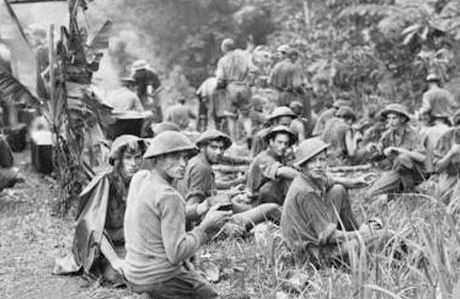 Brigade Hill (Image Australian Army)
Brigade Hill (Image Australian Army)
Ioribaiwa Ridge Battle 14th – 16th September
Trekkers are now on day 7 of their Kokoda Track journey. They are now track fit, are getting excited as Owers Corner and the end is now achievable. Nothing is going to stop them completing the track.
After the loss at Brigade Hill Potts was replaced by Brigadier Porter. Porter was reinforced by an Australian Imperial Force brigade under Brigadier Eather who then took command of Maroubra Force for the action at Ioribaiwa.
With his fresh troops Eather planned the attack. He placed the now combined depleted Battalions of the 2/14 & 2/16 along the Ridge in a defensive position.
The Japanese struck first, whilst Eather was still organising his attack. He had to respond by calling off his offensive attack and take a defensive role.
The action at Ioribaiwa was fought by Kusunose's pursuit group, the same force that had fought at Brigade Hill he is also was still pummelling the Australians with mountain artillery. The Japanese had about 1650 fighting men present at Ioribaiwa.
On 14th September the Australian encountered the Japanese on the left flank. Neither battalion was able to gain any advantage.
In the Australian centre the combined battalions of the 21st Brigade were being attacked by the full Japanese artillery, eight guns placed on a ridge north of Ioribaiwa pounded the Australians. The Australians held off Kusunose's infantry. He decided to try the Australian right flank.
This attack began on the 15th September. Fighting continued all day on all fronts. Those dug in on the centre of the ridge taking constant artillery bombardment, on the right they were unable to eject the Japanese penetrating this position.
On the 16th September there was a stalemate. Eather being the first of the two commanders to request and receive permission to withdraw to Imita Ridge.
The Australians for the first time had fought the Japanese to a draw. Eather was unaware of the advantage he had for once outnumbering the Japanese. He did not consider that he could hold the Japanese at Ioribaiwa Ridge.
Australian casualties 49 killed and 121 wounded. Japanese lost 40 dead and 120 wounded.
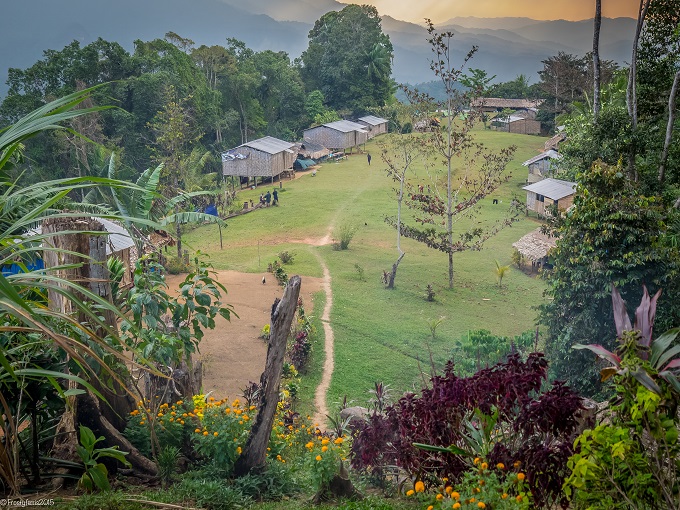 Present day Ioribaiwa
Present day Ioribaiwa
Kokoda Trail Commanders
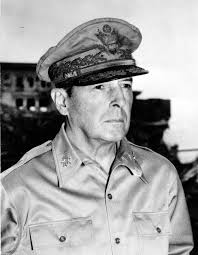
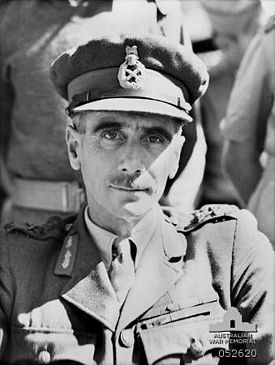

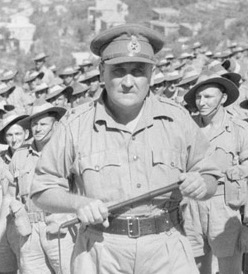
General Douglas MacArthur Major General George Vasey Lieutenant General Sydney Rowell Sir Thomas Blamey
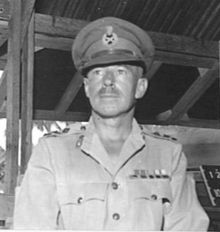
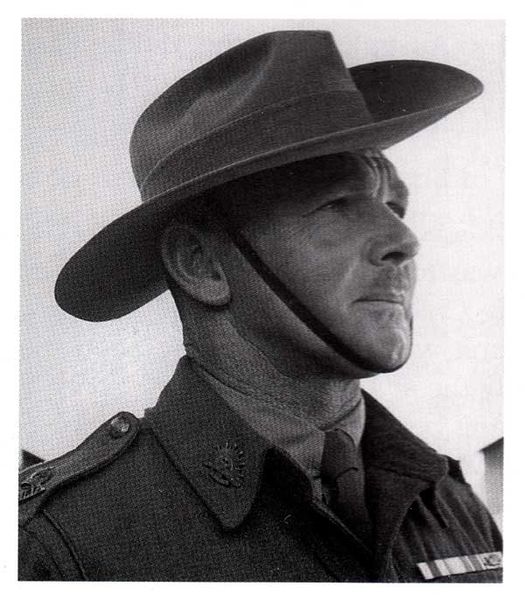
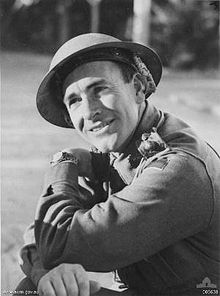
Major General Kenneth Eather Brigadier Arnold Potts Lieutenant Colonel Ralph Honner
Pacific Chronology
1941
Sunday 7 December 1941
The war in the Pacific begins.
On 8 December 1941 the Japanese launched surprise attacks on the United States fleet at Pearl Harbour in Hawaii (where local time was 7 December), the United States base in Manila in the Philippines, and on the British Army in Malaya.
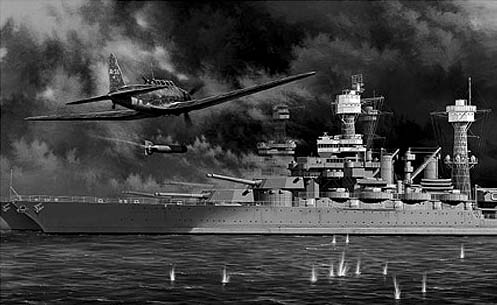
Pearl Harbour Attack
Tuesday 9 December
Japan invades Malaya and Thailand.
The invasion of Malaya begins shortly after midnight on 8 December 1941. On 9 December, No 8 Squadron, which also had gone into action, is evacuated from Kuantan airfield. On 10 December, the destroyer HMAS Vampire becomes the first Australian ship in action against the Japanese when the HMS Repulse and HMS Prince of Wales are sunk off the east coast of Malaya by enemy aircraft.
Wednesday 10 December
Australia declares war on Japan
1942
Saturday 3 January
Allies arrive in Port Moresby
As part of a plan to screen the northern approaches to Australia an infantry battalion is sent to each of Timor, Ambon and Rabaul. A brigade was sent to the most important point, it began to arrive on 3 January 1942.
Friday 23 January
Japanese invade Australian Rabaul, the peacetime capital of the Australian Mandated Territory of New Guinea, falls to the Japanese on 23 January 1942. The small Australian garrison, Lark Force, is overwhelmed and most of its troops, including six army nurses, captured. Approximately 400 of the troops subsequently escape to the mainland and another 160 are massacred at Tol Plantation. Kavieng, also directly to the north east of Papua is invaded the north east of Papua is invaded.
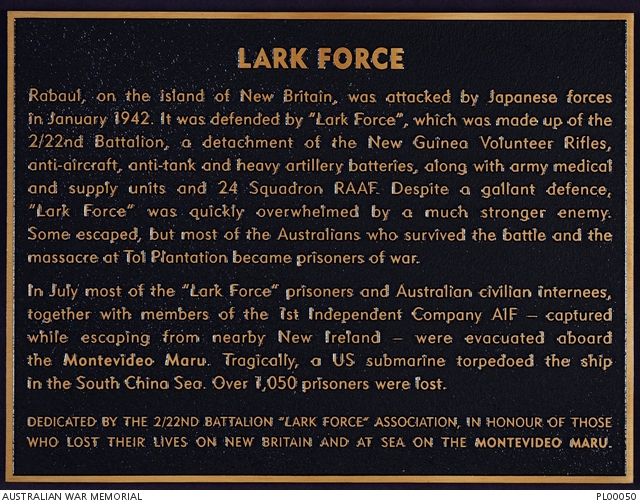 Tuesday 3 February
Tuesday 3 February
Port Moresby first bombed.
Port Moresby experiences its first bombing raid as Ambon in Indonesia falls to the Japanese.
Saturday 14 February
Military rule formally declared in Papua. Military rule is formally declared and Civil Government in Papua is suspended.
Sunday 15 February
Singapore surrenders.
On 15 February 1942, General Edgar Percival, the British commander in Singapore, calls for a ceasefire and makes the difficult decision to surrender. He signs the surrender document that evening at the Ford Factory on Bukit Timah Road. After days of desperate fighting, all British Empire troops are to lay down their arms at 8.30 that night. More than 100,000 troops (including 14,972 Australians) become prisoners of war together with hundreds of European civilians who are interned.
Thursday 19 February
Japanese first bomb Darwin.
On 19 February 1942, Darwin suffers its first and most devastating air raid and the Australian mainland is directly attacked for the first time. Darwin is subjected to a further 63 bombing raids, intermittently, until the last in November 1943. None are as devastating as this first one. Monday 23 February
Fall of Timor
The Japanese attack Dili in East Timor about midnight on 19-20 February... Other Japanese forces come ashore at Koepang where the Australians fight valiantly but are split by the Japanese advance. In West Timor, the Australians under the command of Lieutenant-Colonel William Leggatt, many of them sick or wounded, are short of ammunition, food and water. They fight a far superior force for four days but the Japanese systematically overrun their positions when Leggatt surrenders with his 1123 men on 23 February. Dutch West Timor is surrendered to the Japanese invading forces.
Sunday 8 March
Japanese land on mainland New Guinea
Imperial Japanese Army and Navy forces land at Lae and Salamaua on the northern New Guinea coast, aiming to establish airbases to attack Port Moresby.
Thursday 12 March
Fall of Java
Java falls to the Japanese after its defence by an assortment of Dutch colonial, British, Australian and American forces. With the Allied surrender in Java the Japanese had attained, in just over three months, an empire in the Pacific and south-east Asia.
Thursday 18 April
MacArthur appointed Commander-in-Chief of SW Pacific
General Douglas MacArthur is appointed the Commander-in-Chief of the South West Pacific area.
Monday 4 May
The Battle of the Coral Sea
A Japanese infantry regiment, aboard transport ships and with a strong escort of destroyers, cruisers and aircraft carriers, was en-route from Rabaul to invade Port Moresby. An American and Australian fleet attacked the Japanese, forcing them to abandon the attempt. The Japanese lost the carrier Shoho and the Americans lost the carrier Lexington.
Friday 8 May
Philippines Falls
Philippines fall to Japanese forces. Three Japanese infantry regiments which participated in this campaign are now available for operations against New Guinea and the Solomon Islands.
Sunday 31 May
Japanese subs enter Sydney HarbourIn May and June 1942 the war was brought home to Australians on the east coast when the Japanese attacked Sydney Harbour from the sea. In the late afternoon of 31 May 1942 three Japanese submarines, I-22, I-24 and I-27, sitting about seven nautical miles (13 kilometres) out from Sydney Harbour, each launched a Type A midget submarine for an attack on shipping in Sydney Harbour. One of the Japanese midget subs fired a torpedo which sunk HMAS Kuttabul.
Wednesday 3 June
The Battle of Midway in the central Pacific
The Battle of Midway in the central Pacific takes place. Japanese naval power is checked with the loss of four aircraft carriers.
Tuesday 14 June
Japanese decide to attack Port Moresby overland
Japanese command decides that the advance on Port Moresby would be overland, from north to south. They begin planning the landing that would take the Japanese forces across the Owen Stanley Range, via the Kokoda track, to Port Moresby.
Tuesday 7 July
Australian Kokoda operations begin
Warned that the Japanese may land on the north coast, Papuan and Australian troops begin operations along the Kokoda track.
Tuesday 21 July
Japanese forces land at Gona
The Japanese Yokoyama Advance Butai force lands at Gona to begin the advance south across the Owen Stanley Range, over the Kokoda track, to attack Port Moresby.
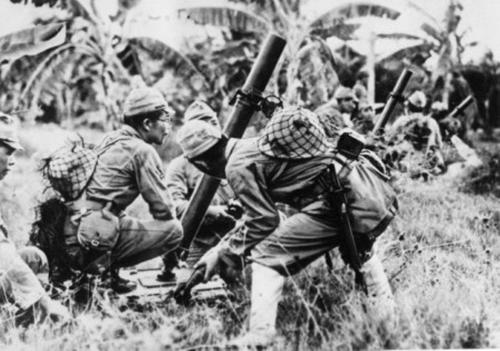 Japanese Invasion of Buna & Gona-Wikiwand
Japanese Invasion of Buna & Gona-Wikiwand
Wednesday 29 July
Japanese attack Kokoda
The Japanese attack on Kokoda is successful. The Australian commander, Colonel Owen, is killed and the Australians retreat to Deniki where they come under the command of Colonel Cameron.
Tuesday 4 August
Cameron takes command of Maroubra Force
Lieutenant-Colonel Allan Cameron arrives to take command of what was now called "Maroubra Force".
Friday 7 August
US Marines land at Guadalcanal
US Marines land at Guadalcanal (Solomon Islands) diverting Japanese focus from Papua.
Saturday 8 August
Second Kokoda attack.
Under Colonel Cameron the Australians counter attack from Deniki and retake Kokoda. They are unable to hold it and again retreat to Deniki.
Thursday 13 August
Major General Allen arrives at Port Moresby
The 7th Australian Division is to reinforce the Australians along the Kokoda track. Its commander, Major General Allen, flies into Port Moresby.
Sunday 16 August
Lt Col Honner arrives at Isurava to command Maroubra Force
Lt Col Honner arrives at Isurava and assumes command of the 39th Battalion from Cameron.
Saturday 23 August
Brigadier Potts assumes command of Maroubra Force
Brigadier Arnold Potts assumes command of Maroubra Force from Porter.
Monday 25 August
Japanese offensive: Milne Bay - Isurava
Japanese troops launch a co-ordinated Papuan offensive at Milne Bay and Isurava.
Friday 29 August
Private Bruce Kingsbury wins the only VC of the Kokoda campaign
The out-numbered Australians were defending Isurava. Firing his Bren gun from the hip, Kingsbury broke a path through the enemy to recapture the position. Felled by a sniper, he is awarded the Victoria Cross posthumous.
%20(2).jpg)
Isurava Casualties-(AWM 013286)
Sunday 31 August
Australians withdraw from Isurava
In a series of rear guard actions the Australians, hotly pursued by the Japanese, fall back along Eora Creek through Templeton’s Crossing.
Thursday 4 September
Japanese defeated at Milne Bay
The Japanese suffer their first land defeat of the war, by Australian troops, at Milne Bay.
Sunday 7 September
Japanese attack at Efogi
The Australians, holding two hills near Efogi, Mission Ridge and Brigade Hill , are again defeated and driven back by the Japanese.
Wednesday 10 September
Potts recalled by Blamey
Blamed for the Australian defeats from Isurava to Brigade Hill, Brigadier Arnold Potts is recalled by General Thomas Blamey.
Tuesday 16 September
Japanese gain control of Ioribaiwa Ridge
After several days of heavy fighting, the Australian defences are shattered by the use of mountain gun fire. Shells burst in the tree foliage overhead, raining shell fragments onto the Australians below. The Japanese occupy Ioribaiwa Ridge and Australian forces pull back to Imita Ridge.
Tuesday 23 September
General Blamey arrives Port Moresby
General Blamey arrives at Port Moresby to take personal command of New Guinea Force.
Sunday 28 September
Japanese withdrawal begins
Owing to defeats at Guadalcanal and the fear that the Australians may land in their rear, the Japanese retreat. When Brigadier Eather attacks Ioribaiwa Ridge, he finds the Japanese have gone.
Monday 29 September
Australian push back Japanese
Australian begin to push the Japanese back along the Kokoda track.
Tuesday 30 September
Australian re-enter Nauro
On 30 September, Australian 2/25th battalion patrols enter Nauro and find it unoccupied.
Monday 12 October
Japanese defeated at Eora-Templeton's
The Japanese attempt to hold a position in the Owen Stanley Range fails. In two weeks fighting the Australians drive them out of the mountain.
Wednesday 28 October
Australian Divisional Commander replaced
General MacArthur, dissatisfied with progress, has Major-General Arthur "Tubby" Allen removed. Major-General George Vasey is appointed to replace him. The Australian forces pursue the Japanese rear guard from Eora Creek to Alola.
Monday 2 November
Kokoda recaptured
The Australians re-enter Kokoda on 2 November, 1942.
Tuesday 3 November
General Vasey hoists Australian flag over Kokoda
Eather's 25th brigade move north from Deniki and enter the abandoned town of Kokoda on 2 November. A Japanese rear guard had left two days earlier. Just after 1100 hours, 3 November 1942, General Vasey hoists an Australian flag over Kokoda.
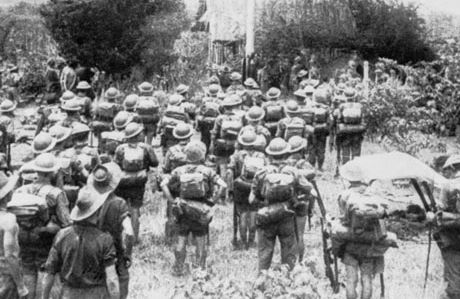 Kokoda Recaptured (Australian Army)
Kokoda Recaptured (Australian Army)
Wednesday 4 November
Japanese defeated at Oivi-Gorari.
In the decisive action of the campaign the Japanese are defeated and driven back to their base on the coast between Gona and Buna.
Friday 6 November
MacArthur arrives Port Moresby
MacArthur arrives in Port Moresby to take up residence
Monday 9 November
Blamey delivers 'Rabbits' speech.
In a controversial address to the troops General Blamey is accused of implying that the men ran like rabbits during the Japanese advance along the Kokoda track.
Thursday 12 November
Naval battle at Guadalcanal
The Japanese decide to withdraw from Guadalcanal after their largest attempt to reinforce the island fails.
Monday 16 November
The Battle of Buna-Gona begins.
The Japanese, pursued back to their main base in Papua, dig in around Gona, Sanananda and Buna. The Australians and Americans attack them there.
Wednesday 9 December
Gona falls to the Australians
1943
Saturday 2 January
Buna falls to the Australians and Americans
Friday 22 January
Japanese final foothold annihilated
Final Japanese beach foothold at Sanananda annihilated. Remnants of the Japanese force escaped north along the coast towards Lae.
Saturday 23 January
Papuan Campaign ends
Official end to the Papuan Campaign.
Tuesday 2 March
The Battle of the Bismarck Sea
The Japanese sent a convoy of eight transports, with a destroyer escort, to reinforce their garrison at Lae in New Guinea. In three days of air attacks the Royal Australian Air Force and the United States Army Air Force sank all the transports and four of the destroyers. At least 2890 Japanese were killed.
1944
Saturday 24 April
Australians occupy Madang, New Guinea.
Australian troops occupy Madang, New Guinea.
Saturday 26 October
Australians launch campaign in northern New Guinea
Australians launch Aitape-Wewak Campaign in northern New Guinea.
Saturday 4 November
Australian forces land on Bougainville and New Britain.